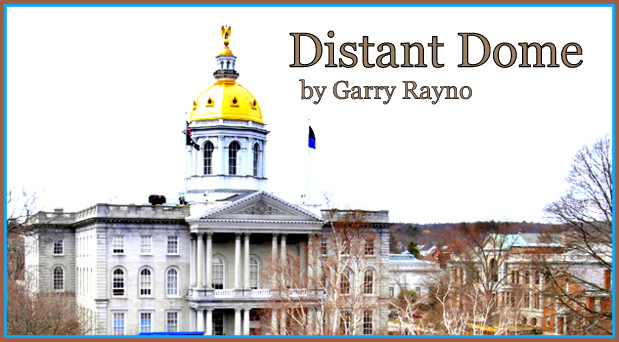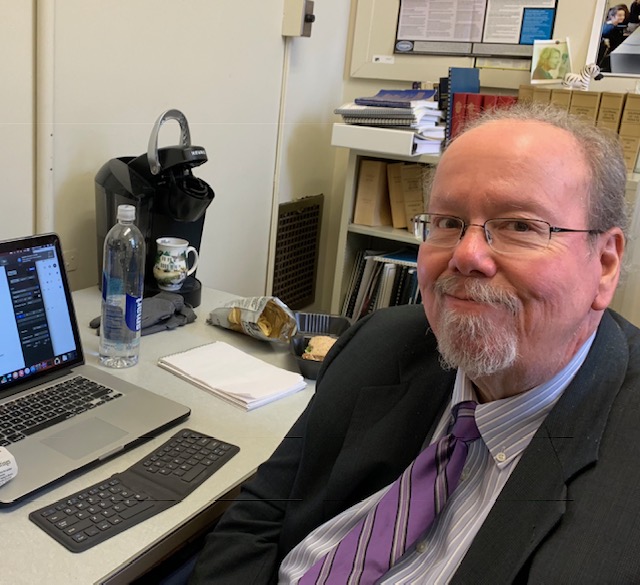
By GARRY RAYNO, InDepthNH.org
Local control was a phrase heard frequently last week regarding the opening of public schools this fall while the coronavirus continues to ravage much of the country.
Local control is a bit of a misnomer in New Hampshire because we are not a “home rule” state.
What does that mean?
This is a quotation from the New Hampshire Municipal Association’s website:
“Contrary to popular belief, New Hampshire is not a home rule state. Despite our political tradition of local control, New Hampshire’s Constitution does not grant any power directly to municipalities. Our municipalities only have authority to act if the state legislature gives it to them through a statute. ‘Towns only have such powers as are expressly granted to them by the legislature and such as are necessarily implied or incidental thereto.’ Girard v. Allenstown, 121 N.H. 268 (1981).
“This means that when a town, local board or official wants to take a certain action, they must find a law that grants them that authority. It is not enough to conclude that there is no law prohibiting the action; silence in the law is usually a prohibition against that particular municipal action.”
In essence there is no “local control” in New Hampshire from counties to towns to a road agent to a selectman or school district unless the legislature — with the signature of the governor — decides to give permission to do it.
For years the municipal association tried to change the compact so that cities and towns would be able to take any action unless it was forbidden by lawmakers, but not surprisingly the legislature refused to change the arrangement.
Unless the legislature agrees, which it does, a city or town would not be able to tax its property owners or to plow town roads.
Today cities and towns cannot set their own tax rates to pay for municipal services or schools or counties. The state Department of Revenue Administration has to set the official rates before the cities and towns can send out the tax bills.
Yet the phrase “local control” is heard frequently.
Last week Gov. Chris Sununu announced the state plan for reopening public schools and used the phrase “local control” several times while touting the plan’s flexibility for each school district to determine how to safely reopen or not.
The opening of schools has become a politicized, polarizing issue in recent days and the Centers for Disease Control and Prevention has yet to announce its revised guidelines after President Trump slammed the agency over its initial offerings.
But school boards, parents, educators and students all want to see children return to school buildings. The question is how to do that while protecting the health and safety of students, teachers, administrators and other staff members.
CDC guidelines have never wavered from the need for six feet for social distancing nor, if that is not possible, to wear a face mask.
No current school facility in the state is large enough to allow reconfiguring the space to allow all of its students and educators and staff a safe social distance. Consequently some other arrangement has to be made such as staggered scheduling, continued remote learning, mandatory face masks, personal protection equipment, frequent testing, contact tracing or many other methods and procedures.
But most of what has to be done to protect students, teachers, administrators and other staff costs money and the state’s reopening guidelines are silent on that.
The state received $38 million in CARES Act money for public education from kindergarten to 12th grade, which is allocated based on size and Title I allocations.
That money is earmarked for coronavirus expenses. But in order to receive the money, each school district has to file a grant application and each district has a set amount of funds to potentially spend.
So if you are a small district, and need some major work to make it safe for your students and school personnel, you may quickly max out your allocation.
The governor’s office also has $9 million in federal discretionary funds but has yet to release guidance on how that money will be allocated.
None of the financial options was mentioned in the reopening announcement.
So unless something changes and the federal government quickly puts together another stimulus or relief package, which is unlikely due to conflicting demands from all sides, school districts will have limits on what they spend without returning to voters for special meetings or moving funds around in their budgets.
In the school reopening press conference, the governor touted “local control” and said that is one reason the state has some of the best schools in the country.
Note he said “some” because for every St. Paul’s or Phillips Exeter or Bedford or Bow or Hanover, there is a Pittsfield, Berlin, Claremont or Franklin, which struggle financially to provide their students with the opportunities prevalent in the property-rich school districts.
So if you happen to live in the Pittsfield school district, what are your options for opening schools this fall, versus Portsmouth or Meredith?
Some school districts struggled mightily to provide students with what they needed when the entire state went to remote learning from March until the end of the school year.
Particularly difficult situations arose with students on individualized learning plans, which the governor recognized and issued an executive order to try to address.
The executive order for remote learning was not an exercise in local control, not to say it wasn’t needed, because it was, but state officials often are selective when they talk about local control.
Local control was not a consideration when the Department of Education and State School Board decided to take over the experiential learning program and decide what credits students would receive instead of local school districts.
The same is true when lawmakers decided to allow parents to opt out of long-established testing programs rather than have local school boards decide the issue.
It depends on what the goals are if local control is important or not, and that cannot be separated from the politics involved.
So when you hear the phrase “local control” what you really have to understand is that they are really saying is, “You are on your own.”
The state does not want to mandate methodologies or arrangements that need to be employed to safely open schools in the midst of a raging pandemic because there is a constitutional amendment requiring the state to pay for that.
So instead, school districts are given “flexibility” to decide how best to reopen their schools if at all, because state leaders do not want a “one-size fits all” solution.
This downshifts costs and responsibility to the local level without the state’s expertise and readily available federal funding to address what has to be done to protect the health and safety of students, teachers, administrators and other staff.
Downshifting is another New Hampshire tradition almost as strong as local control.
Garry Rayno may be reached at garry.rayno@yahoo.com.
Distant Dome by veteran journalist Garry Rayno explores a broader perspective on the State House and state happenings for InDepthNH.org. Over his three-decade career, Rayno covered the NH State House for the New Hampshire Union Leader and Foster’s Daily Democrat. During his career, his coverage spanned the news spectrum, from local planning, school and select boards, to national issues such as electric industry deregulation and Presidential primaries. Rayno lives with his wife Carolyn in New London.
InDepthNH.org is New Hampshire’s only nonprofit, online news outlet dedicated to reporting ethical, unbiased news and diverse opinions and columns.






